While I’ve been playing shoot ‘em ups of one kind or another for getting on for forty-five years as I write, it’s only really over the last couple of years that I’ve come to appreciate the finer points of the genre, taking a methodical approach through curated games that would ease me in to key mechanics and new skills I didn’t even know existed, and also be a fun way to progress too, from more accessible nineties shooters like Steel Empire and Battlemania on Mega Drive, or Blazing Lazers and Star Parodier on PC-Engine (where I did previously document the start of this journey), and onto the likes of the more frantic but still accessible Batsugun, through to the slowed-down or entry-level modes of bullet-hells such as Touhou 8 or some of CAVE’s console rereleases such as Deathsmiles and Mushihimesama. And within them, copious hours spent getting to know ships and hit boxes; where I need to be rather than how to react; when to play aggressive or defensive; choosing power-ups then keeping them powered-up; mastering the bullet-curtain and so on. That’s not to say I’m great at any of them but have kept going on each until I’m seeing endings in a respectable (in my opinion!) number of credits, although it’s still always about survival over score!
Coming back to CAVE, of everything I’ve encountered on this journey so far I can safely say it’s their games I’ve looked forward to getting to the most, and I’ve now been through the lot! I should say I had a bit of a head-start though – the aforementioned Deathsmiles has been my number one favourite shoot ‘em up for quite a long time, and if we’re talking vertically-scrolling only, as we’ll discover shortly, the same is true of DoDonPachi in that sub-genre, although it’s the one game of theirs I haven’t played much of for ages, which is kind of why we ended up here! Anyway, apart from some of both of their sequels, the rest of their output was pretty new to me, but as I think about why I already now hold so many of their games so dearly, there’s the feel, the energy, the challenge, the creativity, the complexity, the jaw-dropping looks and impeccable soundtracks, but there’s unquestionably one factor above all else, and that’s the exhilaration! There’s nothing like majestically sweeping across the screen in the face of a swarm of enemies and a mass of bullets to come out of the other side still intact against all the odds!
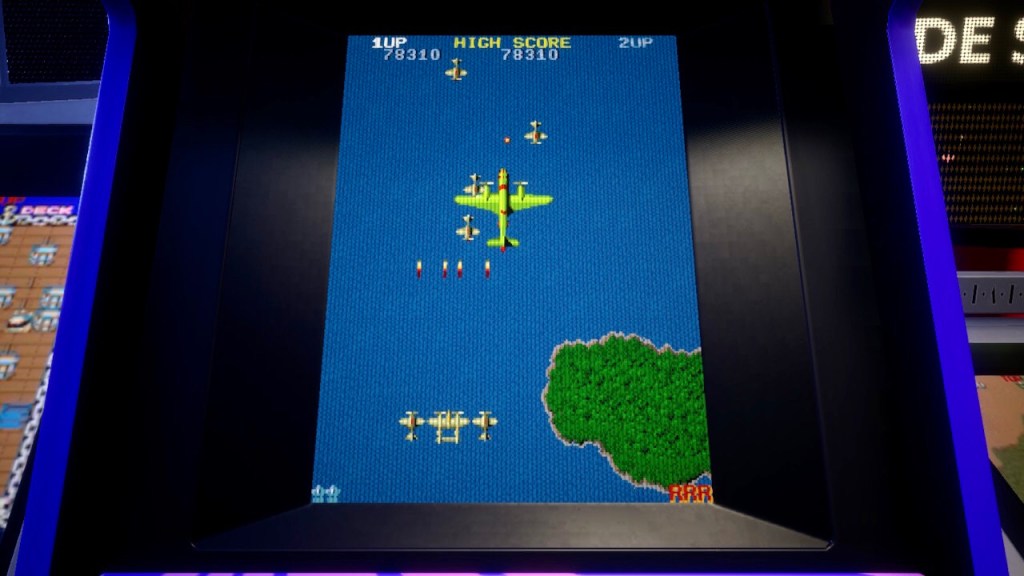
And I guess that’s the same reason I’d hold any shoot ‘em up so dearly, which is probably worth a sentence each on a few more to test out the theory! In the interests of brevity (in case you haven’t noticed how long this goes on for yet!) I’ll limit it to my top five vertical and horizontal shooters, and ignore single screen or 3D or other oddballs. Vertical first, but we’ll skip number one as that’s going to get more than enough attention shortly. Batsugun is number two, but I’ll come back to that shortly too… Should have done horizontal first! 1942 is next, and while that’s way more primitive than everything else we’re talking about here, there were few thrills at the time like that loop-the-loop, so it’s getting a tick in the exhilarating box just for that! Then we’ve got Espgaluda II from CAVE in 2005, and for pure exhilaration I think it probably matches DoDonPachi, which is also the case for Mushihimesama from the previous year – probably also the CAVE game I’ve spent the most time with and become most proficient at. Relatively!

Right, horizontal now, and as also said before, Deathsmiles is number one here and number one overall. I just adore its gothic chaos, and there are few more exhilarating moments in gaming than when you take down one of the huge galleons docked in the Halloween Town harbour in a huge fireball as you’re swarmed by the flying demonic masses. And the rest is alright too! Next is Thunder Force AC and I’m not sure if that’s exhilarating – just massively polished and loads of fun! G-Darius is definitely exhilarating as you take on masses of enemies and giant robot fish bosses, and that’s exactly why I love it. Progear is number four, it’s more CAVE, it’s from 2001, and it’s got all the exhilaration you’d find in any of these games here but with the added thrill of picking your way through some insanely dense bullet patterns. Absolute masterpiece! Then we close my top five with P-47, the very traditional World War II that I’ve never really been able to pin down why I’m so fond of it but I don’t think it’s exhilaration. Should have made this one top three! But anyway, I think you get my point – all about the exhilaration! Or mostly at least!

Thinking about that also got me to thinking about other sources of pure exhilaration in gaming outside of shoot ‘em ups… Atari’s 1983 Star Wars arcade game would be the earliest example I’ve got, and it’s one with a double-helping too! The first is the very act of climbing down into the cockpit, grabbing that yoke and instantly becoming immersed in what didn’t take much imagination to become an actual X-Wing in the midst of the climax of the first movie! The second is the moment of transition from surviving across the surface of the Death Star to finally dropping down into the trench, as the horizon spins into the attack run to take down the Death Star, and while the first might have been fleeting, you can still experience this one any time you like!

I think Star Wars might also be a shoot ‘em up, so let’s go for another obvious choice that obviously isn’t, Sonic the Hedgehog 2. Despite having played the original almost day-one on my brother’s Sega Mega Drive, I was essentially still a newcomer to Sonic the Hedgehog when I got totally mesmerised by Sonic CD as I was flicking through the games on the Mega Drive Mini II, and one thing quickly led to another, and at the time of writing I’ve finished eleven 2D Sonics, in the order you’re supposed to play them, and I can honestly say that Sonic the Hedgehog 2 quickly became the benchmark by which I measured the others… And I mean “measured” because as usual, I have a list of them that’s still obviously evolving as I continue through the series but is already in favourites order, starting there and followed by Sonic Advance on Game Boy Advance all the way through to Sonic Chaos on the Game Gear at number eleven, which isn’t terrible, considering, but is slow, bland and doesn’t have much to it. Which is the total opposite of the Sonic 2, an in-your-face, vibrant, and – most importantly – exhilarating platforming rush from start to end that I’ve had on the go on one system or another most of the time for the last six months! We’ll have to cover this one here too as soon as the 2D list is as complete as I can make it…

I did also think about the rollercoaster racing of Stunt Car Racer on Atari ST but if we’re talking racing games then my last example here is the most obvious of all to me, although there’s an argument to be had that the whole first stage of the 1987 arcade version of Out Run might count in its own right – particularly that wonderful sight near the start as Magical Sound Shower is just getting going on the stereo and the separate lanes of the highway merge to form the backdrop for this this exotic ocean-fronted thrill-ride! As incredible as that will always be though, for pure exhilaration it’s outdone by the final stage of route D, where you go up and then down and then into a bend at full speed, surrounded by traffic and lines of trees leaning over the road that is simply breathtaking – you can virtually feel the wind in your hair!
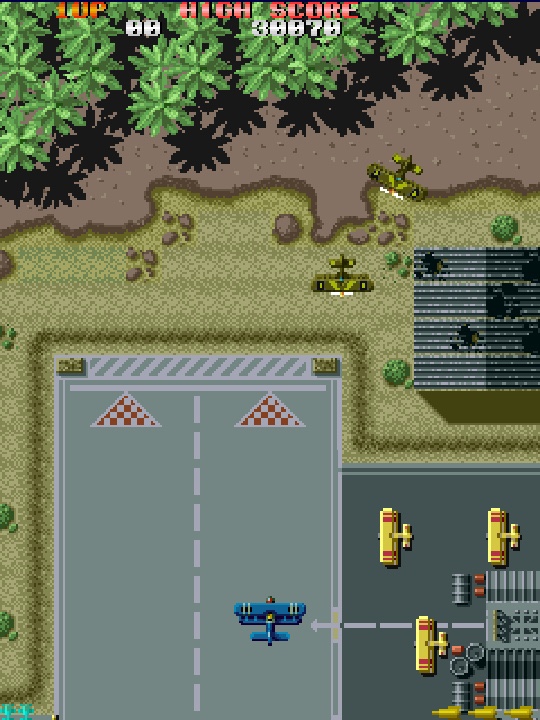
CAVE emerged from the demise of Toaplan, whose output in the arcades and elsewhere through the eighties and early nineties reads like some kind of gaming hall of fame, but as we’re talking shooters I’ll mention the likes of Tiger Heli, Slap Fight, Flying Shark, Truxton, Grind Stormer (or V-V) and Zero Wing to name just a few… All your base are belong to us indeed! I reckon it’s the mighty Batsugun that’s the spiritual predecessor to what would become the hallmarks of CAVE though, opening the doors to the both the bullet-hell genre, with slower bullets but more of them, as well as energy, polish and exhilaration in spades! That came in 1994 and was Toaplan’s last game, and from there CAVE was formed by legendary Batsugun developer IKD (Tsuneki Ikeda), artist Joker Jun (Junya Inoue) and several other ex-Toaplan colleagues. A year later they unleashed DonPachi, kicking off a series that would become synonymous with CAVE as well as creating a foundation for many of the mechanics that became equally synonymous with the rest of their games and the wider genre too – not least their approach to the hit-box, which itself might be considered the very foundation for all that exhilaration we’ve been talking about. But we’ll come back to that. And their obsession with bees!
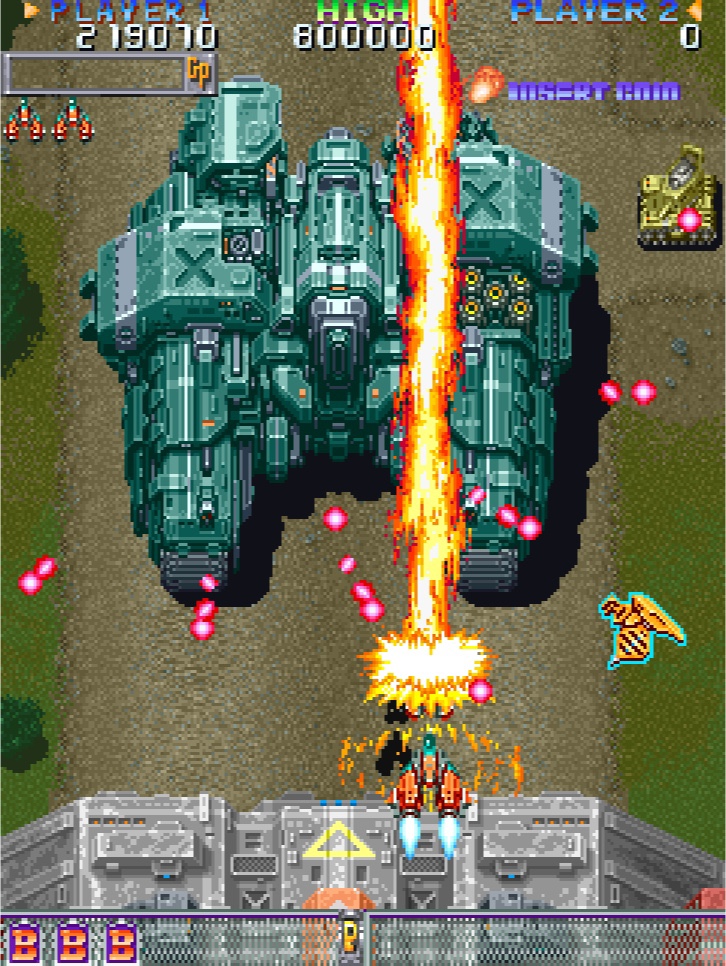
Actually, I believe DonPachi translates as something like “Leader Bee” but I’m not entirely sure why! I’m also not entirely sure the story is massively relevant to its sequel when we get there, although when is a shoot ‘em up story particularly relevant to anything? It is worth mentioning though because it’s almost as harsh as its gameplay! You’re a recruit pilot assigned to a top secret military training program that apparently takes eight years, and if you prove your worth by the end you’ll graduate to the elite DonPachi Squadron. A bit like Top Gun so far, but things soon take an even darker twist than that does, because if you survive the mass of enemies defending the five strongholds you have to conquer in your first mission that makes up the game, you’ll learn that the enemies were actually fellow recruits, sacrificing themselves for the greater good of only the best emerging out of the other side. And if you do emerge out of the other side, you’ll have to do a second loop set seven years later where you’re no longer the rookie you once were, and I assume everything you’ll be killing over these next five stages won’t be treating you like one either! Beat those, and there’s one final test before you graduate, where you need to take down a weapon of mass destruction called Taisabachi, or Colonel Bee!
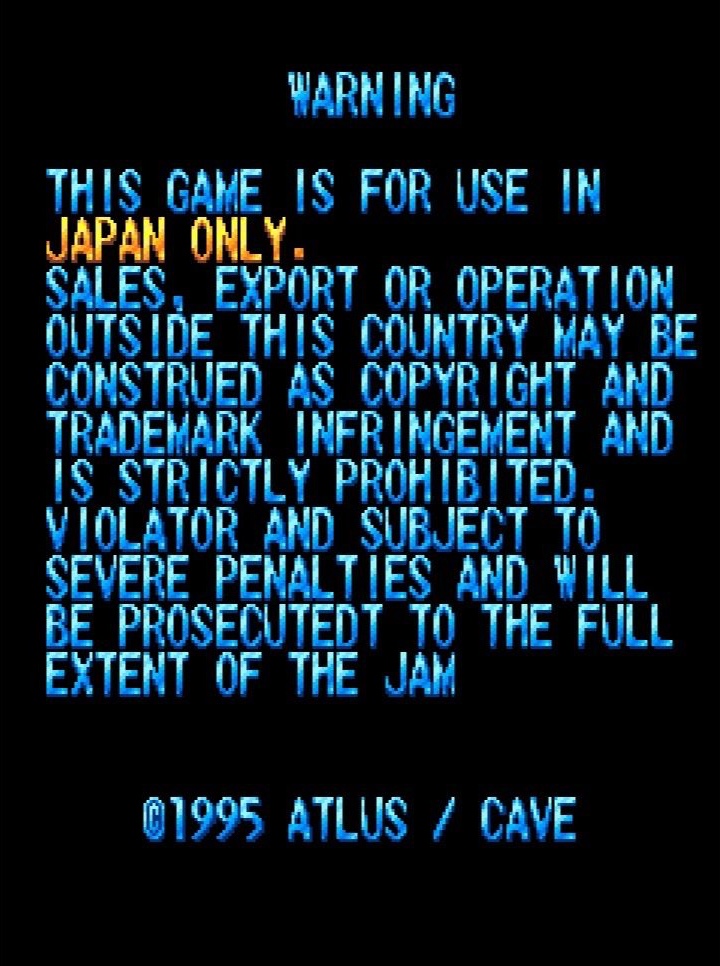
As entertaining as the first game certainly is, I’m not going to spend too much time there because it’s a bit like Mega Man and Mega Man 2, where everything the original introduced was just a bit more refined in the sequel, and that was just enough to tip it into masterpiece territory. And as alluded to earlier, it also introduced a lot that would become familiar through the whole of CAVE’s prolific shoot ‘em up legacy – chaining and score combos, second loops, multiple ship types, hidden scoring systems, hidden ranking, hidden bees… Which is as good a time as any to turn our attention to 1997’s sequel, DoDonPachi, or Angry Leader Bee! In its defence I think in the original Japanese DonPachi has a less literal meaning too, and is a term for the sound of gunfire. Also worth noting that there doesn’t seem to be any standard official way of writing this thing! DoDonPachi, Do-Don-Pachi, Dodonpachi, Do Donpachi and several others all seem to be all fine and dandy! Spelling has never really been CAVE’s strong point though, whether their persistent weird copyright notice about jam, first seen in DonPachi, or it’s legendary, part-hidden boss introduction… “THIS IS NOT SIMILATION. GET READY TO DESTOROY THE ENEMY. TARGET FOR THE WEAK POINTS OF F**KIN’ MACHINE. DO YOUR BEST YOU HAVE EVER DONE.”

Working out when and where I first played DoDonPachi has been a bit of a process of elimination – detective work, if you will, given the nature of where I ended up! Not that it’s particularly sinister in the grand scheme of things, especially when you consider the “where” in question backed right up against Aintree (horse) racecourse, host to The Grand National – surely the only sport on the planet where the TV commentators will actively turn a blind eye to a competitor dying mid-race; something sinister there all around, but what do I know? The protesters’ fault and all that… Anyway, I’m pretty sure I first played this on a PlayStation, and because it was a Japanese only release as far as I’m aware, I had one friend who was into all that malarkey and had a nice sideline in modding PS1s (to make them think a hooky CD was authentic) and generally making inaccessible games more accessible, shall we say! We actually worked together, and at the time – which would have been 1999 or 2000 I reckon – I’d regularly be up that way with work, so would stay at his house next to the racecourse and we’d have a blast just ploughing through tons of illicit games until something stuck. And I hereby conclude that’s what happened here!
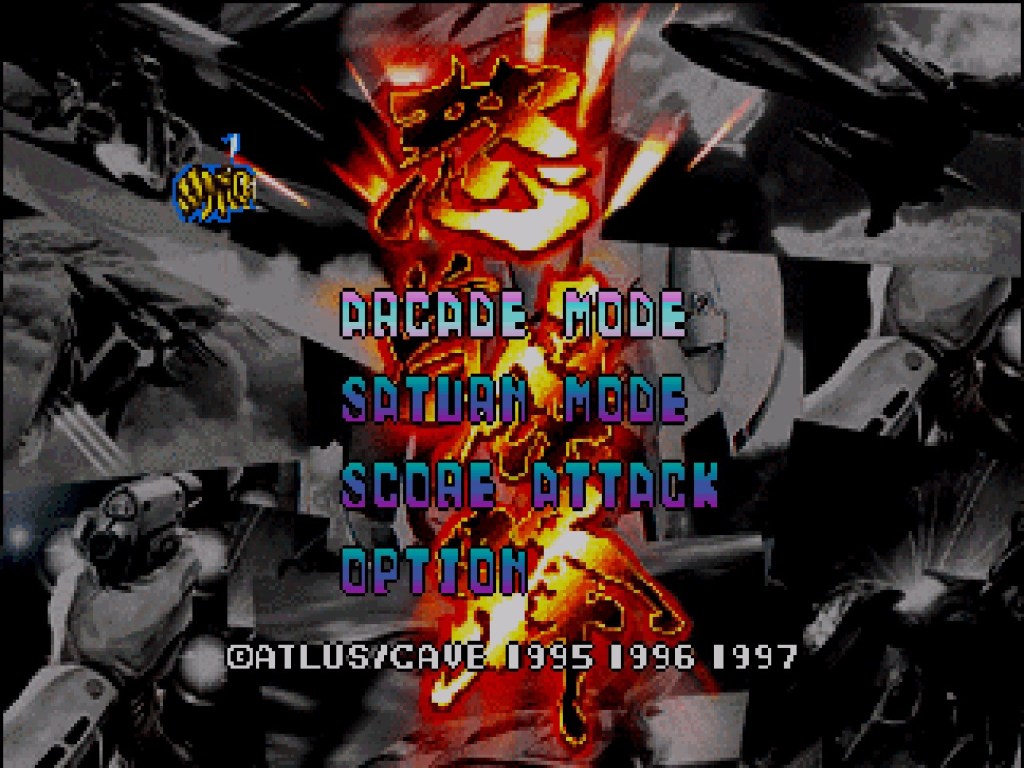
I won’t, however, comment further on my ongoing familiarity with the PlayStation version, but as far as I know it’s remained very elusive outside of Japan ever since, and likewise the Saturn port, which had an exclusive “Saturn Mode” with an extra stage and boss as well as various difficulty settings. Bizarrely, it seems like there was an Xbox version given away with a 2011 visual novel though, complete with Kinect motion-sensing support! And to this day, no official version of the original arcade game anywhere else either… I’d love it on my Nintendo Switch though, and I’d even happily pay the extortionate £29.99 they’re currently charging for the “new” version of the not wholly unrelated Castle Shikigami II from a few years later on there! Actually, I’d pay double that and then some for arcade DoDonPachi, but for now I reckon we’re in the bounds of game preservation with this one, so kind of Robin Hood territory on MAME. Or something! And with that, it’s probably a good idea to turn our attention to what’s been going on since we murdered all our fellow recruits and become Top Gun…
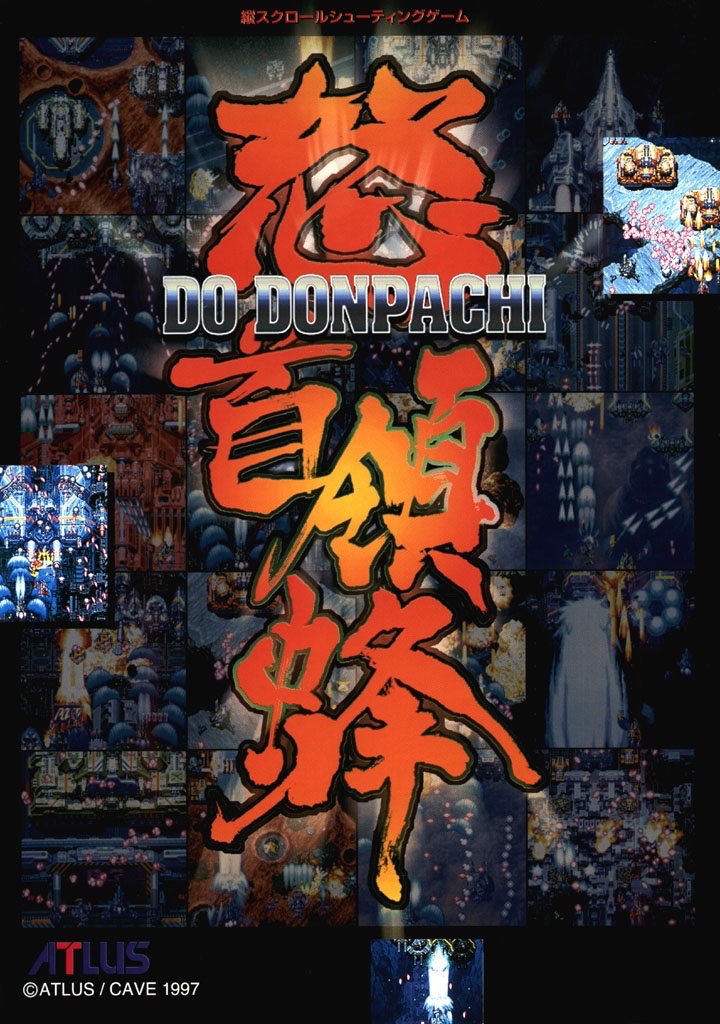
This game is actually set many years after the original, when some sudden communication problems with the 7th Starship Corps soon turn into a full-on attack by “Mechanized Aliens” but by the time anyone could do anything about it, they’d just disappeared. And apparently the best course of action from there was for a “worker bee” from the DonPachi Squadron to jump into his New-Type Ultra Annihilation Figher Craft, DO-N82, and take them down solo! Unless, of course, you have a player two, which I don’t. Anyway, in yet another sinister twist, complete the first loop and you’ll find out (and there’s a big spoiler coming) that the army of Mechanized Aliens you’ve just taken down was, in fact, the missing 7th Starship Corps, and the whole thing was made up by your leader, Colonel Schwarlitz Longhena! What a thing to do, but no time to worry about that because he’s also sentencing you to be hunted down by the rest of the DonPachi Squadron as punishment for your foul deeds. The second loop is interesting because there are some pretty harsh entry requirements, and as there’s no chance I’ll be meeting any of them, we might as well cover it here! The first loop is made up of six stages, with a seventh only accessible on said second loop, but to get there you need to finish the first six on one credit, losing no more than two lives, have a maximum hit count of around 300 (but more or less depending on your choice of ship), collect thirteen hidden bees that can be made appear in various places on each stage (more later!) from four stages, and score more than fifty million points! And just for completeness, beat the new seventh stage on the second loop and you’ll fight series favourite Hachi, the giant mechanical bee, then Hibachi, the fire bee, who’s the true final boss. And then you get the true ending, which I’m not spoiling!

At the start of the game you’re given a choice of three different ships, and assuming you’re playing on your own, Type A is a red fighter jet which has a narrow stream of shots for maximum precision and options (small satellite ships that provide extra firepower) rotating around you and firing forwards. Type B is a green helicopter with front-facing regular guns and two options firing in the direction you’re moving, allowing for simultaneous forwards and sideways fire although it can get awkward when things get frantic. Finally, Type C is a blue fighter jet with a spread-shot and fixed options that also spread, giving you destructive coverage across most of the width of the screen when you’re low down on it. There’s then the same choice for all of them having a stronger shot or a laser power-up that makes you invincible to smaller enemies. I don’t think I’ve ever chosen the latter though – already enough to think about without worrying what constitutes small! For all variants, tapping fire will give you rapid bursts of shots while holding it down will turn it into continuous laser fire, which is more destructive but is going to slow your ship down while you’re using it, which can be a benefit in many bullet-heavy situations. You’ve also got a limited stock of bombs per life, which are great for screen clearing when you’re in a sticky situation or accelerating the downfall of a boss you’re not quite ready to do the dance with totally unaided yet but doing so is going to affect your score at the end of a stage, though not as much as dying will! Oh yeah, if you’re holding down the laser button when you let rip, you’ve got a super-destructive twisted laser bomb thing too!

As always when you’ve got a choice of ships, you want to give them all a proper go as part of the “getting to know you” process you’d have for any schmup you’re serious about, just to see which suits your own style best. In the case of DoDonPachi, I’m really not that keen on the helicopter but the other two both feel great to control, with all the precision you need combined with that forgiving hit-box allowing for frequent and often necessary moments of recklessness! The ability to switch from regular to slow (and more precise) movement through the fire button is incredibly intuitive too, and you’ll be doing it without thinking to suit whatever’s happening in that split-second in no time! And while that certainly plays a huge part in creating that sense of exhilaration I’ve been going on about, you also need to be confident enough about when to throw your ship wildly across the screen and when to zone-in on a bullet-field, which in itself is partly down to familiarity with your chosen ship, its hit-box and being able to focus on what’s going on just in front of it, and partly down to knowing the level. What’s being thrown at you is being thrown from exactly the same place every time, and you’ll very quickly work out where the more aggressive enemies are in each stage, their behaviour and their bullet patterns, even if you’re not quite sure how to deal with them yet! Dying is just a part of the learning process though, so rather than get frustrated I like to put myself in intentional danger because you never know what might come of trying everything – there’s always a gap somewhere!

I mentioned survival over score earlier but the same learning process goes for scoring here. It inherits the GPS or Get Points System from the first game, which just involves chaining together enemy kills within a designated (and very limited) time period, indicated by a diminishing gauge, so the bigger your combo the bigger your score bonus. In the very first level, though, where you’re given rows of cannon fodder to quickly ramp this up with, you’ll also notice that if you take out the first row too quickly, that gauge will disappear before the next lot has even appeared on the screen so you’re starting all over again; instead, you just want to hold back so there’s no break in the chain. Similarly, for bigger enemies and bosses that take a bit of a pounding way beyond the combo gauge, you’ll want to switch to laser (or fire off a laser bomb) to keep the hit-count climbing.

While we’re talking scores, defeated enemies and buildings will leave various types of stars in their wake, and they’re all worth points when you pick them up as well as at the end of the level, assuming you don’t die or you’ll be starting again with those too! There’s regular stars dropped by regular enemies worth only 100 points each initially but five times that when you finish a level, then badge stars worth 300 then 1,000 for buildings mostly, then for big buildings, big enemies or certain big bits of bosses you’ll sometimes get a big star worth 10,000 points. You’ll also occasionally see a weird, ghostlike bee appearing, which you need to shoot with your laser to make it solidify, and the more of those you collect the more they’re individually worth, starting at 100 points and going all the way up to 100,000 for the maximum thirteen on each stage, I believe, though I’ve only ever collected a handful at once. There is a real thrill to spotting a new one though, and they’re also always in the same place so something else to learn as well as another to explore the whole screen everywhere you go! Do look out for flowers too – the bees aren’t the only things that can make them bloom! Less mysteriously, you can also pick up bombs floating around, up to the maximum denoted by your ship choice, as well as power-ups that increase your bullet number and destructive power, up to five times before collecting them becomes bonus points instead.
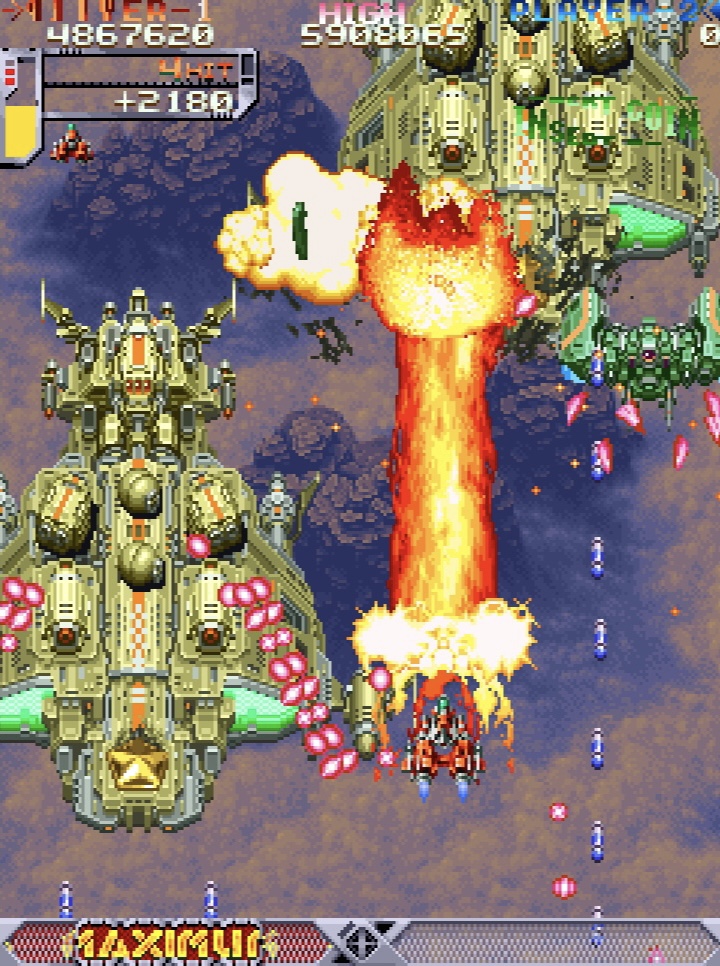
Sorry, I wasn’t planning on this becoming an instruction manual but I could go on and on about this game forever. As you’ve already noticed! What’s maybe not come across yet, though, is that this game is totally insane! Within seconds you’ve seen hundreds of enemies turn into spectacular fireballs of varying sizes, you’ve frantically tried to collect more stars they’ve left behind than is humanly possible while avoiding this big tank thing literally vomiting a thousand bullets at you at twice the speed of anything you’ve seen so far, then a mini boss appears with a thousand more! To hell with spacing out shooting stuff to keep your combo rising on top… And now there’s a proper boss with stuff spinning around and spraying out more bullets on bullets and it’s all so wonderful! And that wonder evolves rather than ever gets old, and the stress will eventually turn to simply enjoying the relentlessly frantic ride as you do get on top of the rest of what’s going on, and you will start to spot the bees and string out the chains and work out you get extra big stars if you focus your fire on those spinning bits on the boss just before it dies… And then it all starts again on the next level, and the next, and the next, and so on!
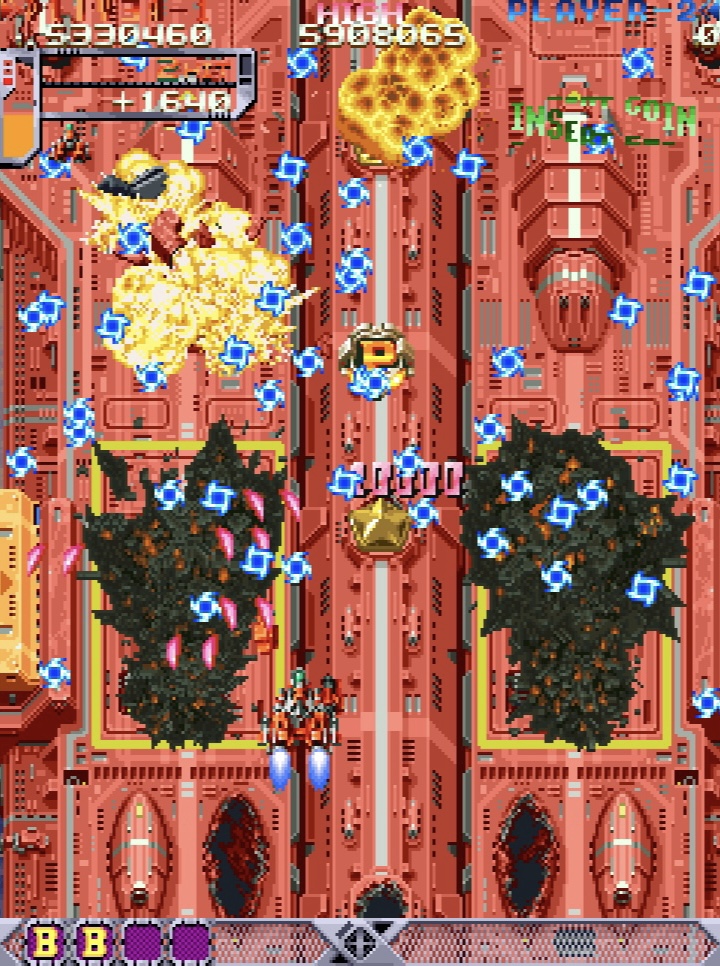
While that’s certainly no easy task, as is usually the case with a CAVE shooter, it’s a massively rewarding one if you’re willing to put the time into learning its ways and working out what it’s asking of you. And I’m talking “learning” here too – this is no R-Type where memorisation equals mastery; it’s more instinctive, knowing how far to push its boundaries, and once you do, pushing a bit more – like that example I just gave about not only taking down the first boss, but taking it down a certain way. The bosses aren’t the most imaginative you’ll ever encounter – mostly giant, insect-inspired (to a greater or lesser extent) spaceships or tanks but with a ton of varied firepower that they’ll end up chucking at you all at once sooner or later! We’re not really talking the most intense bullet-curtains, but there’s a lot of variation in bullet types, speeds and densities, demanding a mix of high aggression (meaning point-blank, top of the screen laser fire) and dropping back down the screen as you hunt for gaps. There’s also variation in strategy depending on whether you’re just trying to survive, meaning dropping your bombs, or for score, meaning getting through unscathed without dropping bombs, or for really big scores, meaning finding the ways of teasing out those hidden big stars! The first few bosses are relatively manageable with a bit of practice (and there’s no shame in save states for this either!) but you’ll find much more dynamic movement and surprises, like a big, thick laser out of nowhere, around half way through the first loop, and a lot more bullets coming from a lot more directions at a much higher speed, and these are pretty brutal!
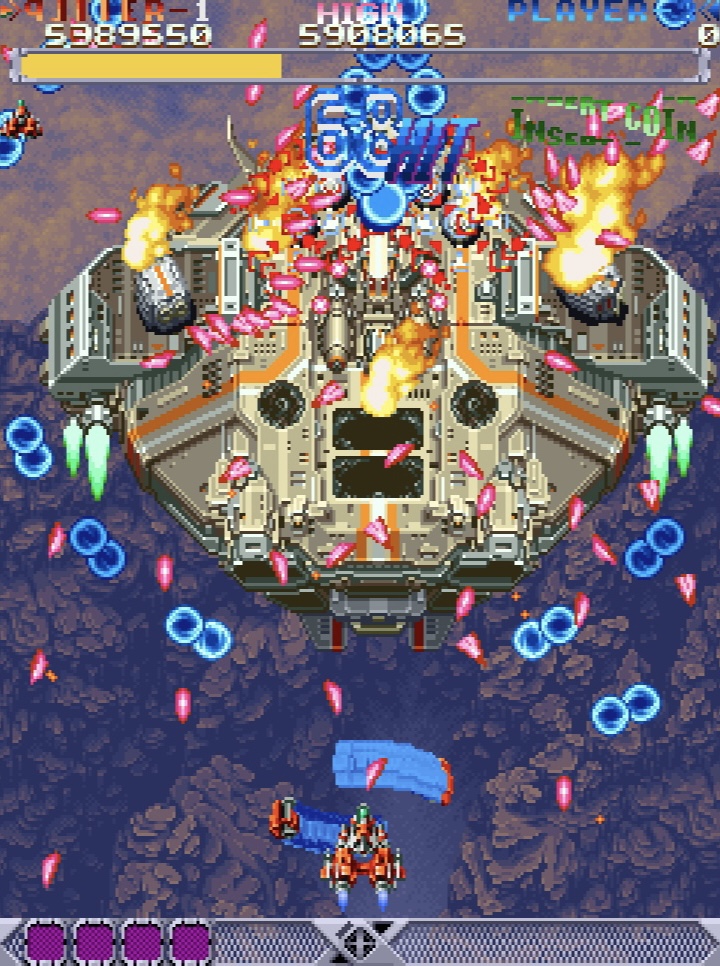
I actually think there’s plenty of merit in using save states to learn bosses, allowing for singular focus, immediacy and being able to break them down into chunks to learn their patterns step-by-step, and if you want to use them elsewhere to see the rest of the game then that’s also fine, but if you want to learn to actually beat the levels themselves then I think you need to do so the old-fashioned way, which is why I also avoid continues for this too! Anyway, let’s quickly talk level design, which are consistently breathless but well-paced and meticulously planned, so you’re generally flying by the seat of your pants however you choose to play, but there’s plenty of variety available in where you’re doing it. Stage one is this mountainous, vertigo-inducing canyon that could almost be a dried-out ocean, with vast wrecked spaceships scattered far below this arid landscape. Stage two then goes for this vibrant orange cratered lunar look, initially dotted with these even more vibrant and contrasting military landing zones and huge hangars hiding huge tanks, before all that military outpost stuff takes over completely, full of roads and buildings and scope for some very satisfying explosions, helped in no small part by the really beefy sound effects that create a literally non-stop sonic barrage of weapon-fire, star pickup jingles and loads of high-impact destruction… Some of those explosions are just so massive! In stage three you’re far above some very acrid-looking clouds, with desolate mountaintops and futuristic cone-shaped buildings peeking through them until an enormous, almost pastel orangey-pink spaceship arrives to dominate the scene before the boss appears below then behind it. This is where the soundtrack really comes alive for me too, with this soaring electric guitar taking centre-stage before transitioning back to the regular WWE wrestler entrance-style rock drama for the boss. That’s what you’ll find throughout in-level, with lead guitar variations over chugging rock riffs over chunky rock drums, interspersed with orchestral synth stabs and occasional funky basslines. Plenty of funk between stages too, as well as a bit of mad jazz before the game starts!

Stage four kicks off above a raised, fortified highway bypassing a long-since ruined city, with enemies coming out of everywhere, as also evidenced by the noticeable increase in bullet numbers and density here, and I think complexity too – far more demands on your manoeuvrability to avoid them than up to now. Should you survive past another military air force kind of base, the background suddenly breaks away and goes to black, like you’ve dropped off the end of the world, before this very red, very uniform, very generic (but nicely lit!) sci-fi structure appears below. Stage five is also very generic sci-fi – think flying over the Death Star in Star Wars minus the reliance on seventies special effects. Cool boss though – also generic but I really enjoy its bullet patterns! Stage six evolves from more intense sci-fi to a kind of mechanised beehive look, but it’s clear that for the last two levels, the focus is more on enemies and level dynamics than fancy backgrounds, and likewise for anywhere you might go after those! Which might also be where things go proper bullet-hell with proper bullet-curtains for a while too! And I’ve done it again – talk about environmental variation suddenly becomes a walkthrough!
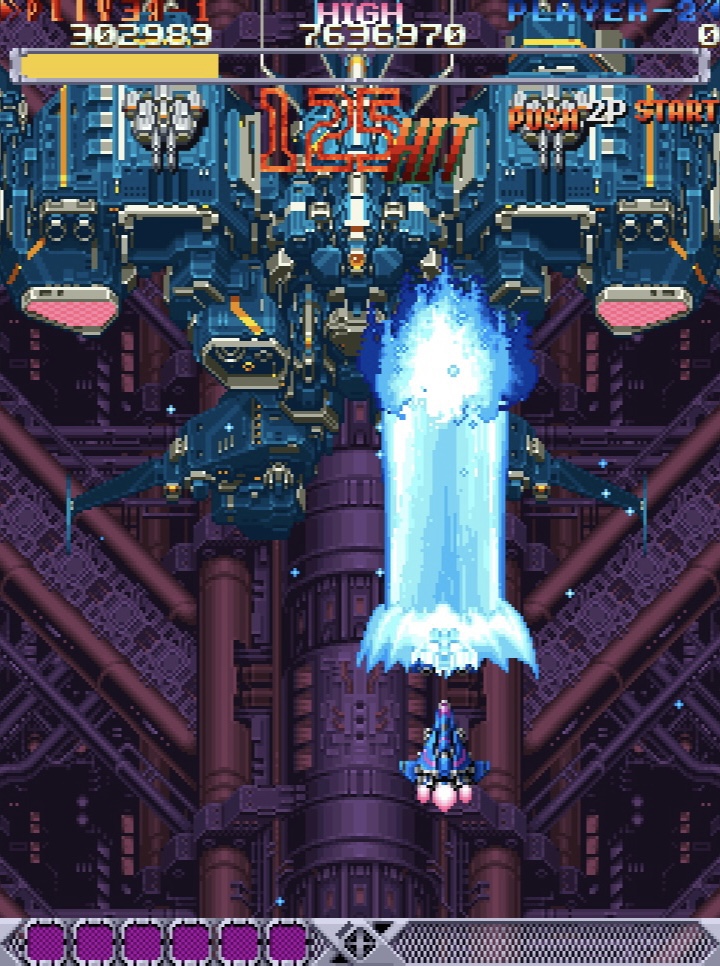
I know I’ve touched on them a bit as we’ve walked through but I’ll quickly mention the visuals. Anything this game lacks in originality here (in the main) it more than makes up for in stuff going on all at once, which is generally a continuous micro-evolution of enemy to explosion to star to pick up. I also mentioned the explosions before, and what they give to your ears they also give to your eyes, with this “explosive” fireball effect that comes and goes then leaves this big smoky crater in whatever was beneath it, as well as the obligatory star, of course! And this is so effective when they’re happening one after the other and all over the place, like in that first stage where there’s lines and lines of tanks to take out, then a bigger ship (meaning a bigger explosion) then more lines of tanks. It doesn’t work quite so well on the bosses, where it’s happening on a much larger scale but there is a great flaming payoff when they do finally go down! As also alluded to before, some of the unique and vibrant colour choices in the backgrounds and larger enemies really give the game some extra punch too, and maybe I should give it credit for bringing some originality here because that does provide a look very much of its own. There’s more detail in some backgrounds than others, although the less distinctive ones, such as the clouds, don’t tend to outstay their welcome and will soon give way to some always well thought out cartoon realism that has a very “lived-in” feel to it. There’s just about enough movement in your ships and the enemies – whether regular or bosses – to keep things interesting, but again, tons of detail and plenty of variety. And speaking of movement, it’s always smooth and effortless however much is on the screen or however many bullets and explosions are going on… And thinking about it, that might account for some of the less exciting backgrounds; take that cloud level, for example, which has crazy amounts of tiny bullets flying out of regular enemies together with these huge, bigger than the screen battleships which end up in massive, bigger than the screen explosions all at the same time. Hopefully!

Horror always beats sci-fi for me, and that’s about all that separates this and Deathsmiles, but if I had to choose a desert island shoot ‘em up I reckon I’m taking DoDonPachi! I’m not sure I’ll ever see it all in less than a respectable few credits but I’d be happy to try, and then there’s all those bees to find rather than accidentally come across, and if that’s not enough then there’s always virtually endless depth to that GPS scoring system. I’ll be playing this forever, desert island or not! Well, as long as my aging heart will take all that excitement at least! It might have been superseded on the aesthetic front by its sequels and the likes of Mushimisema or that bonkers disco game CAVE did, but this is certainly up there with the ultimate gaming thrill-rides, schmup or otherwise, as far as I’m concerned, and more so the more you play. Which is why I do. A lot!

